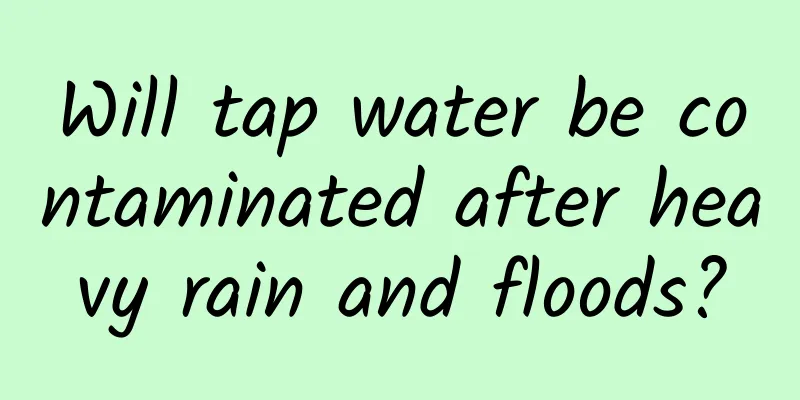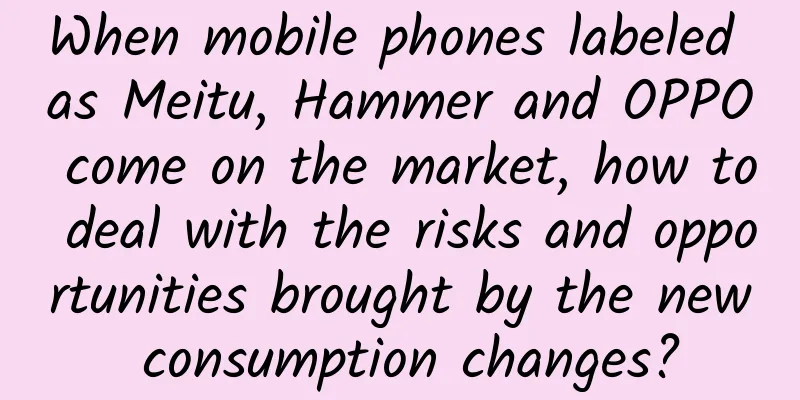Will tap water be contaminated after heavy rain and floods?

|
gossip: Since July 17, 2021, Henan has experienced continuous heavy rainfall, with heavy rain, torrential rain and extremely heavy rain in most parts of the province. The heavy rain caused serious urban waterlogging in Zhengzhou. At present, although the heavy rain and flood disasters in some areas have gradually subsided, how to ensure the health of people in the disaster area during and after the floods in the context of the current severe epidemic prevention and control situation? Many people believe that the tap water in the city will be polluted after the heavy rain. Truth interpretation: Since July 17, 2021, Henan has experienced continuous heavy rainfall, with heavy rain, torrential rain and extremely heavy rain in most parts of the province. Among them, the rainfall in Zhengzhou reached 617.1 mm in three days, which is like pouring the water of 317 West Lakes into Zhengzhou. The heavy rain caused serious urban waterlogging in Zhengzhou. At present, although the heavy rain and flood disasters in some areas have gradually subsided, under the background that the current epidemic prevention and control situation is still severe, how to ensure the health of people in the disaster area during and after the flood? 01 Vaccines and clean drinking water Not one can be left behind! Dr. Zhang Wenhong, director of the National Center for Infectious Diseases, once said in a speech: "The greatest health contribution to human society is, first, vaccines, and second, clean drinking water." However, sewage, muddy water, and garbage in heavy rains will flow with the tide, polluting drinking water sources, and the content of bacteria, viruses, and protozoa in the water will increase significantly. In ancient times, "great disasters were followed by great epidemics," mostly because of the failure to properly handle drinking water. Therefore, it is necessary to ensure that people in disaster areas have access to clean and hygienic drinking water. So, after the rainstorm and flood, can the tap water, the main source of our daily water, still meet the sanitary standards before the flood? Can it still be used safely? To understand this question, we first need to understand how tap water is produced and how it enters thousands of households; secondly, we should also follow the track of tap water purification and transportation to check which links may have loopholes during and after the flood disaster. 02 Does tap water come “by itself”? The past and present of tap water As the slogan in front of the Beijing Water Museum says: tap water is not "tap-fed". We can summarize the history of tap water in eight words: "water collection, water transmission, water purification, and water distribution". Specifically, water intake means pumping raw water (raw materials for water plants) that meets the national "Standards for Drinking Water Source Quality" from water sources (rivers, lakes, seas, groundwater) through water pumps; water delivery means transporting the raw water to the water plant through pump stations; water purification means purifying the raw water and producing qualified tap water that meets the national "Standards for Drinking Water Hygiene". Conventional tap water purification processes include coagulation, sedimentation, filtration, and disinfection; water distribution means pressurizing and distributing qualified tap water to thousands of households through secondary pump rooms. Of course, some units and communities cannot be directly supplied due to the high floors and limited municipal tap water pressure. They need to build their own water storage and boosting facilities to pressurize the water supply again. After the above process is completed, we can turn on the tap at home and qualified tap water will come "by itself". So, during and after the flood disaster, which places in the above links are vulnerable to impacts and affect the safe use of tap water? 03 Water collection, transmission, purification and distribution No one can afford to be hurt Let's start from the beginning. The first is the water intake link: after a heavy rainstorm, the water source in nature will inevitably be affected to a certain extent, and various impurities, sediment, garbage, etc. in the water will increase greatly. However, as long as the raw water obtained from the water source can meet the national "Standards for Drinking Water Source Quality", the subsequent purification treatment of the water plant will not be greatly affected. Moreover, in most areas of Henan Province that suffered from heavy rains and floods, the raw water of the water plant is currently basically high-quality surface Class II water from the South-to-North Water Diversion Project. At the same time, the water has a certain self-purification ability during the flow process, and the water source quality will gradually return to normal after the flood disaster. Of course, if the quality of the raw water cannot meet the "Standards for Drinking Water Source Quality", the water plant should immediately stop taking water, suspend production, and stop supplying water. Water purification: Water plants can ensure that qualified tap water is produced during rainstorms and floods by increasing the dosage of disinfectants and coagulants. This is because when designing the water purification process, each water purification facility has a certain ability to resist shock loads. However, if the raw water is seriously polluted and greatly exceeds the treatment capacity of the water plant, the water supply must be stopped decisively. In May 2009, heavy rains fell in Nanzhang County, Xiangfan City, and flash floods broke out in the upper reaches of Shuijing Lake, the water source of the city. The turbidity of the raw water was as high as 180NTU (scattered turbidity unit), which greatly exceeded the purification capacity of the county's water plant. However, the plant did not stop the water supply in time, which eventually caused the turbidity of the tap water to seriously exceed the standard. Of course, for some water plants with conditions, they can quickly start the pretreatment process or deep treatment process (ozone oxidation, activated carbon adsorption, ultrafiltration membrane treatment, etc.) according to the fluctuation of the raw water quality to ensure that the water quality meets the standard. Water delivery and water distribution: Both are long-distance water delivery and distribution. The difference is that the water delivery link delivers raw water, that is, raw water to be purified; the water distribution link delivers finished water, that is, qualified tap water. During rainstorms and floods, the above two links are most likely to cause road collapse and subsidence due to heavy rains, resulting in leakage of water delivery and distribution pipelines, causing raw water and finished water to be polluted and interrupted. In this case, the water company needs to quickly launch the flood control emergency plan and send pipeline network inspectors to inspect the water delivery and distribution pipelines. Once it is found that the pipeline network is broken or leaking, resulting in the contamination of the delivered water, the water supply must be stopped immediately and repairs must be organized. At the same time, the public should be informed through the news media to stop using tap water and pay attention to drinking water safety. The 2014 Lanzhou tap water benzene exceeded the standard event because the crude oil leak from the oil company polluted the water delivery pipeline (artesian ditch) of the water company. In this incident, the benzene content in the effluent from the Lanzhou Water Plant was as high as 118 micrograms per liter, far exceeding the national limit of 10 micrograms per liter. In addition, water supply and storage facilities that are damaged or flooded during heavy rain should also have their water supply stopped immediately. Water supply can only be resumed after the water recedes, they are thoroughly cleaned and disinfected, and pass inspection by the health department. 04 How does the public know whether tap water is safe? So, is the tap water safe to use after the flood? How should ordinary people learn about the specific situation in a timely manner? First, pay attention to the latest notices and news about tap water released by the government and water companies in a timely manner to find out whether tap water can still be used safely during and after the rainstorm and flood. Second, observe the basic sensory indicators of tap water, such as turbidity, smell, color, etc., to determine whether the tap water is colorless, transparent, and odorless. Third, families can prepare a portable residual chlorine meter to determine whether the residual chlorine in their tap water is higher than 50 micrograms/liter. my country's "Standards for Drinking Water Hygiene" stipulates that in order to prevent tap water from being contaminated again during transportation, the free residual chlorine content of water leaving the centralized water supply plant shall not be less than 300 micrograms/liter, and the water at the end of the pipe network shall not be less than 50 micrograms/liter. 05 Drinking water safety during floods What should we pay attention to In addition to ensuring the quality of tap water, people in flood-stricken areas should also pay more attention to drinking water in their lives: first, do not drink tap water directly, be sure to boil it before drinking; second, do not use water from unknown sources or contaminated water for gargling, washing vegetables, taking a bath, etc.; third, water containers should be disinfected frequently; fourth, consciously protect the source of drinking water. Finally, I hope the heavy rain will stop soon, and I hope everyone can have access to clean and hygienic drinking water. We believe that with the determination of the Party and the government to always put the safety of people's lives and property first, the continuous supply of high-quality water from the South-to-North Water Diversion Project to Henan Province, and the front-line water workers' resistance and perseverance in the wind and rain, the safety of our tap water can definitely be guaranteed! This article is produced by "Science Facts Platform" (ID: Science_Facts) |
<<: Number game: If you fold a piece of paper 110 times, can the universe fit in it?
Recommend
The present and future of Mango TV
Hunan TV is the leader of domestic satellite TV. ...
Taobao Live: The logic behind Sydney’s 300 million yuan sales
When it comes to Taobao Live , are the only peopl...
How to achieve “brand and effect integration” in advertising and marketing through 6 major advertising forms?
Good advertising should achieve "integration...
Why are Internet giants aggressively attacking the film industry?
In 2014, Internet companies entered the film indu...
Android WeChat 7.0.18 released: taps can be withdrawn, and comments in Moments can be deleted
WeChat has just released the latest official vers...
Rumor has it that the iPhone 7 will be equipped with these features: 5-inch screen and dual cameras
January 12, Apple has achieved great success in 2...
Intellectual Academy "Intellectual Training Camp 2.0" fully upgrades your thinking ability
Intellectual Academy "Intellectual Training ...
Community operation: How to build a highly active user community?
Social media is an important means of attracting ...
Want to eat the invasive alligator gar to endangerment? Be careful, it will kill you on the spot
Beijing Daily reported that two days ago, residen...
"Iron Lung Man": Living in an Iron Can, Power Outage Means Death
Imagine that you are lying in a "tin coffin&...
Daily Youxian event traffic generation tips!
In the past, when we went to the supermarket to b...
Quick-travel article: Rebirth of the fishing net: I have transformed into N different identities!
Thousands of sea turtles die every year from bein...
An article gives you a detailed explanation of the animation estimator
[[442626]] Preface TypeEvaluator is translated in...
Where is the most effective place to place the Wenchang Tower in 2020?
In life, we see some families placing the Feng Sh...
Share a simple side project, easily earn 8000+ per month, and you can get started with zero basic knowledge
I haven’t shared a project for a long time. Today...









